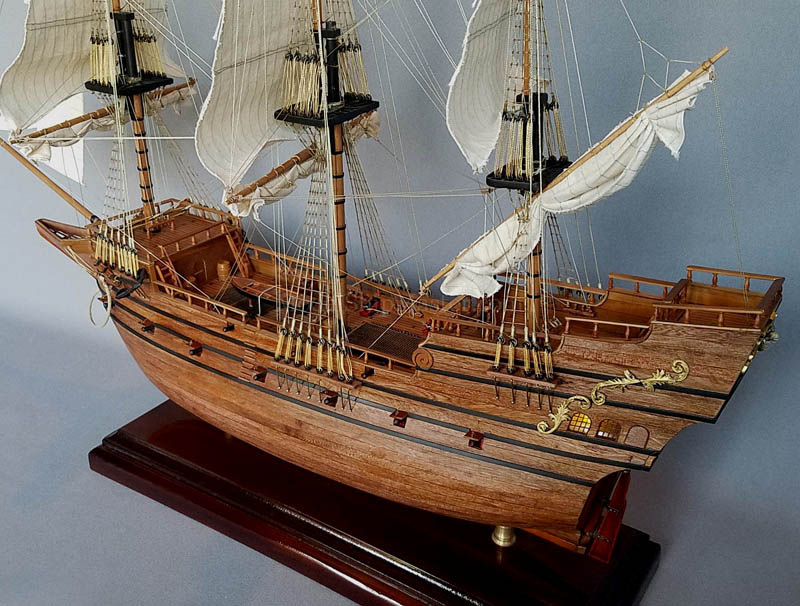[8] Pirate Ships 101: The Inferno
The Inferno, trapped in the lagoon.
One-Eyed Willy's epic galleon that the Goonies eventually discover was actually a full-scale pirate ship set, inspired by the ship from 'The Sea Hawk,' an Errol Flynn classic. Taking two and a half months to construct, the ship measured 105 feet total with the largest sail being 36x36 ft. It was fully constructed in secret from the cast of the film, as director Richard Donner wanted to capture the kids' genuine reaction upon discovering the Inferno. However, they actually had to reshoot their reaction a second time because funnily enough, the first take involved too much swearing.
The Goonies lay eyes on the Inferno for the first time.
IN THE FILM: The Inferno was One-Eyed Willy's galleon that had sailed the high seas in the 17th century, and one that he had commanded when attempting to escape the English naval fleet during a pirate-English war. Sealed inside a cave by the armada, the Inferno remained trapped, although somehow still intact and seaworthy over the years, and was eventually set free when the Fratelli's (the 'bad guys' in the movie) unwittingly set off the booby trapped scale holding Willy's treasure. The cavern collapses and the last we see of the Inferno is a dramatic scene of it drifting off into the Pacific Ocean off the coast of Oregon.
Film clip:
The Goonies (1985) - 'Water Slide and Galleon' Scene [1080]
IN REAL LIFE:
Pirate ships were more likely to be sloops due to their qualifications of three qualities: most pirate ships "had to be fast, seaworthy, and well armed" (Cordingly 158). Other ships often used by pirates would have been brigantines, brigs or schooners. However, since pirate ships were almost always captured and stolen, perhaps One-Eyed Willy's galleon was a stolen galleon used to carry heavy treasure. After all, One-Eyed Willy had a fleet of his own when battling the British Armada; he just happened to be separated and driven into a cave aboard the galleon, forever entombed behind the rocky walls of the lagoon. And as Cordingly writes, while most fictional writers writing stories about pirates favored relatively smaller vessels like schooners and brigs, "the directors of the swashbuckling pirate films usually selected large, three-masted ships and Spanish galleons," (Cordingly 171), which is exactly what we see in the Inferno. Clearly, its sheer size would look much more impressive on screen, while also providing enough space for dueling and stunts. Thus, we can most likely conclude that the Inferno, which was literally based off another impressively-large movie-set ship (The Sea Hawk), is yet another instance of pirate myth over reality.

A ship model of The Inferno



Comments
Post a Comment